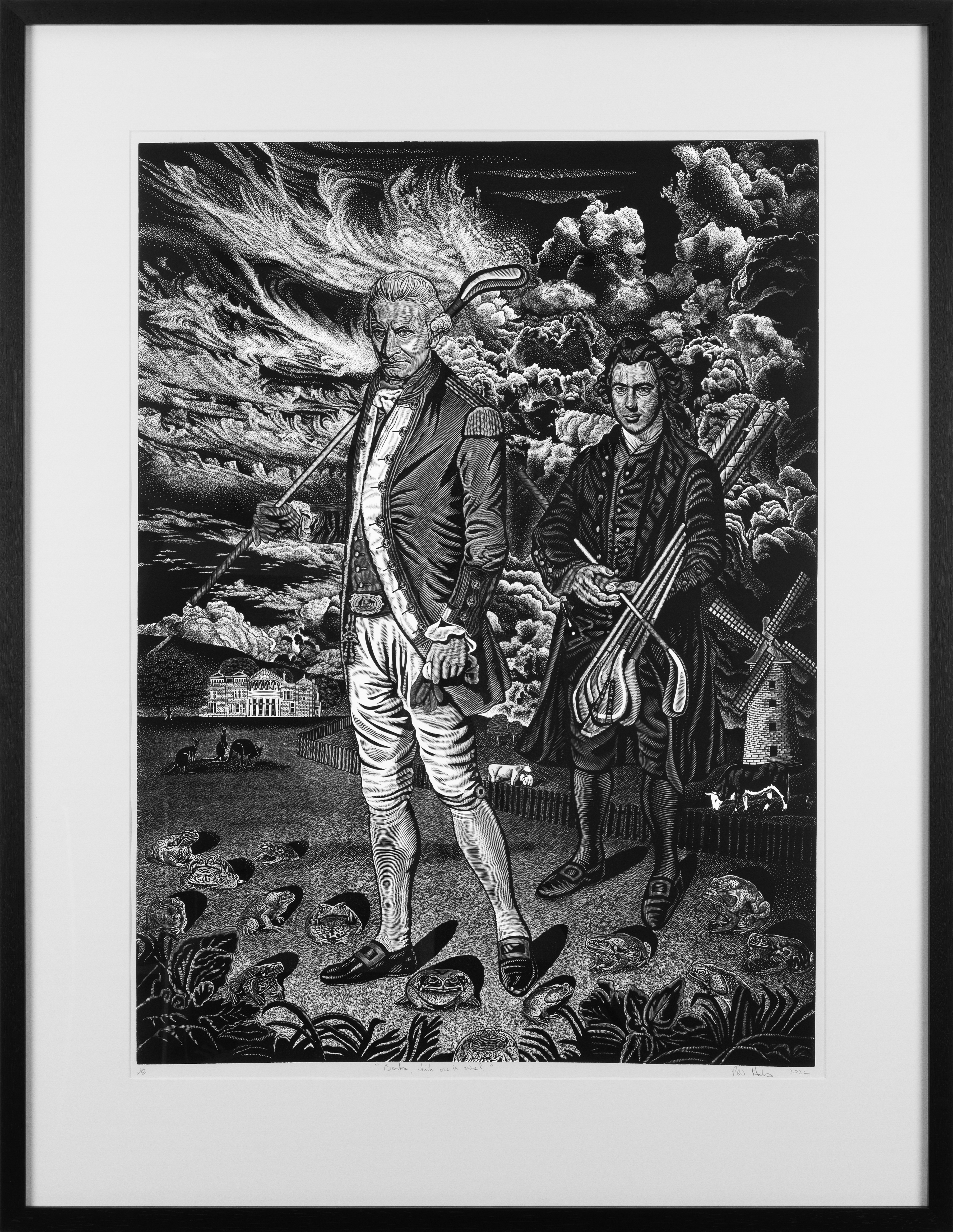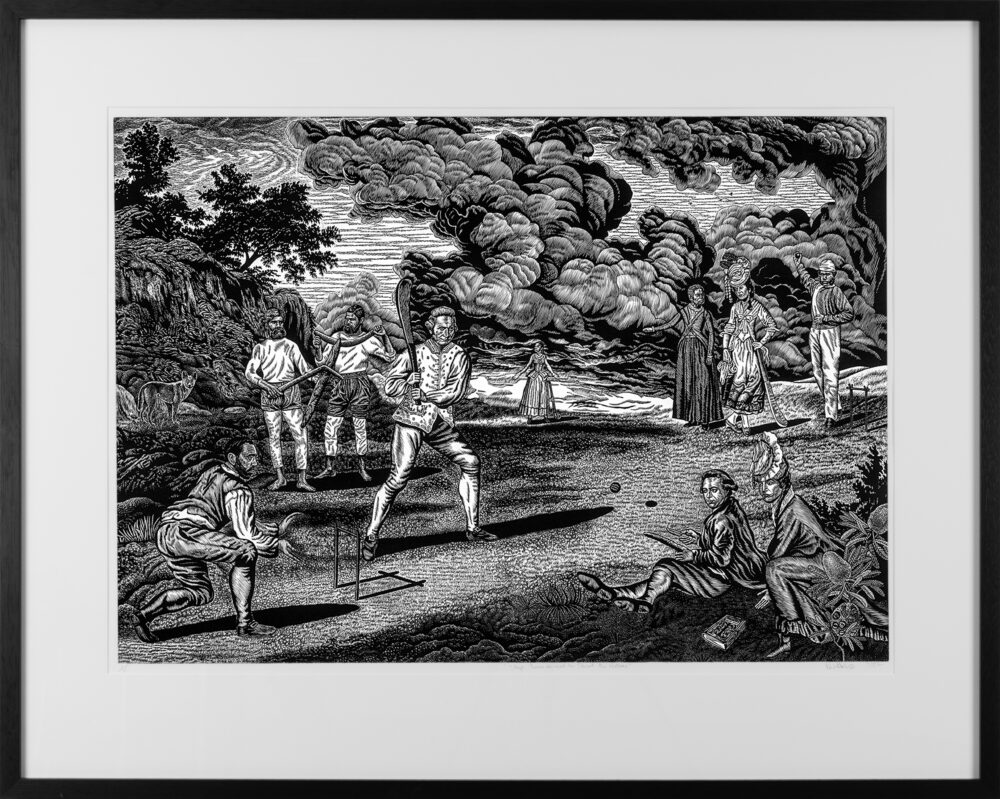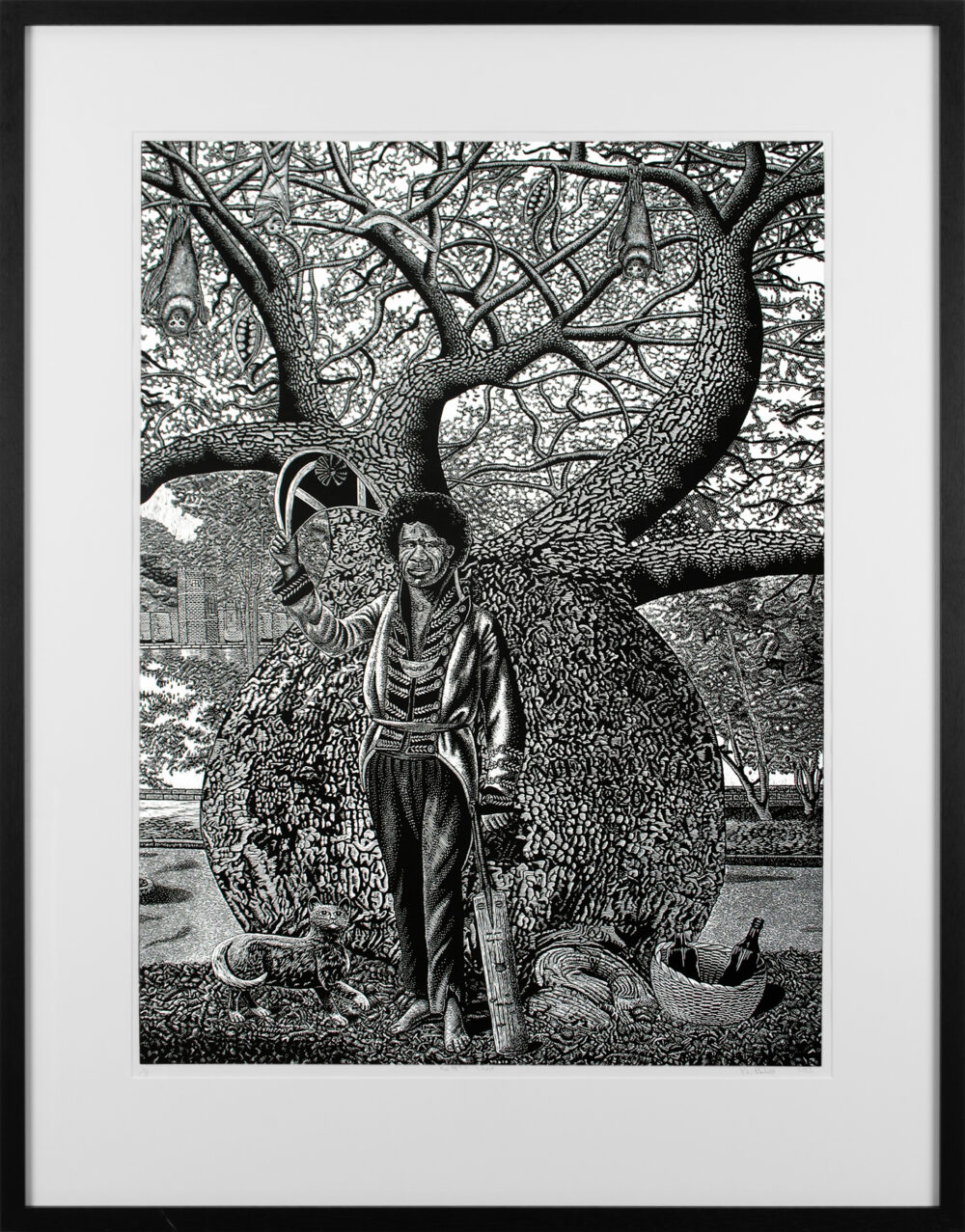

Based on a well-known golfing image, L.F. Abbott’s (1790) The Blackheath Golfer, which became the first golfing poster produced, Hank’s linocut depicts a dandified gentleman out for a game of golf attended by his manservant carrying a bundle of clubs. The original image contains a grand country house, the windmill, and the picket fence. Hanks reproduces the composition exactly, but maps his face (the one familiar from our history books, Nathaniel Dance’s 1775 portrait) onto the golfing dandy and the equally recognisable image of Banks’ face (from Joshua Reynolds’ 1773 portrait) onto his manservant. The grand country house becomes St Andrews, and other smaller details are added to invite closer inspection—note Cook’s belt buckle.
-Elin Howe
Banks, Which One is Mine?, 2013
Price range: $2,000 through $2,900
Based on a well-known golfing image, L.F. Abbott’s (1790) The Blackheath Golfer, which became the first golfing poster produced, Hank’s linocut depicts a dandified gentleman out for a game of golf attended by his manservant carrying a bundle of clubs. The original image contains a grand country house, the windmill, and the picket fence. Hanks reproduces the composition exactly, but maps his face (the one familiar from our history books, Nathaniel Dance’s 1775 portrait) onto the golfing dandy and the equally recognisable image of Banks’ face (from Joshua Reynolds’ 1773 portrait) onto his manservant. The grand country house becomes St Andrews, and other smaller details are added to invite closer inspection—note Cook’s belt buckle.
-Elin Howe












